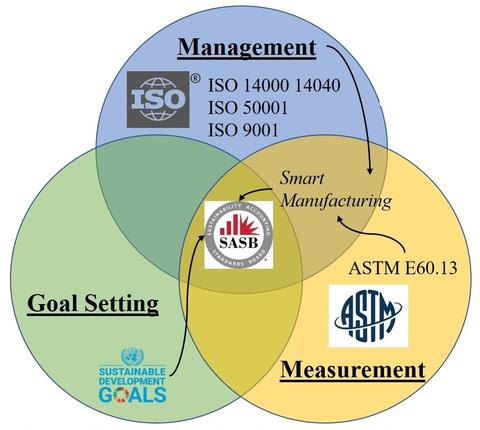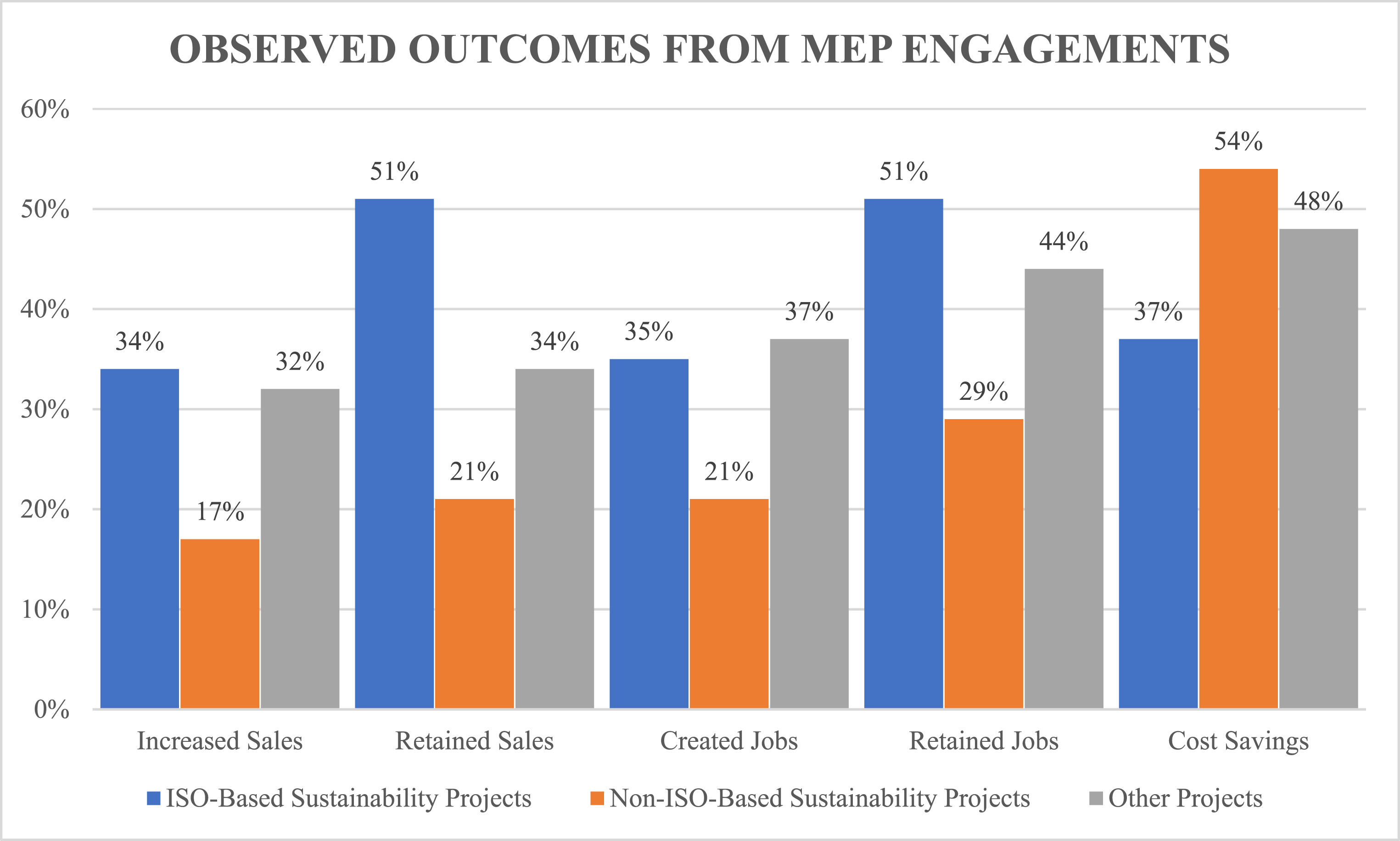Becoming sustainable can be good for business too
Study reviews benefits, barriers, and approaches to small and medium-sized manufacturers becoming more sustainable

The three categories of standards (Management, Goal Setting, and Measurement) related to SASB discussed in Escoto et al. (2022).
Sustainability is becoming a selling point for many customers, and small and medium manufacturers (SMMs) up and down supply chains are being pushed to address their emissions and resource use. However, many SMMs are hesitant to take on sustainability goals. A new paper from NIST and Georgetown University, Refocusing the barriers to sustainability for small and medium-sized manufacturers, addresses their hesitations by reviewing data from corporate sustainability reports and projects supported by the Departments of Commerce and Energy. The paper identifies several standards used to improve sustainability that also yielded increased sales and retained customers and jobs in SMMs.
SMMs are the backbone of every manufacturing supply chain. They account for >98% of manufacturing firms in the US and 76.6% of the manufacturing sector's total environmental impact (Weston 2019; Escoto et al. 2022). This means that making SMMs more sustainable can greatly reduce the country’s emissions and resource use. The world is responding. Most large, multinational corporations are reporting on their own sustainability impacts and are starting to ask questions of their supply chains down to the SMM.
For this study, the authors examined the open literature and interviewed industry experts to better understand the barriers that SMMs face when pursuing sustainability projects. The barriers were addressed across three categories:
- Strategic alignment occurs when sustainability is integrated into corporate growth strategies. To address this barrier, the authors reviewed materials from over 200 corporate sustainability reports from leading multinational organizations to learn from their strategies. The reports referenced standards from the Sustainability Accounting Standards Board (SASB) designed to help focus efforts in 77 industrial sectors. The reports identify efforts with high impact in those sectors and align them with overall growth in the organizations.
- Financial outlook predicts whether sustainability projects will help a company's business viability. For this barrier, data across three sources was examined: the corporate sustainability reports, results of projects with the Manufacturing Extension Partnership (Dept of Commerce), and planned projects with Industrial Assessment Center networks (Dept of Energy). The sustainability reports indicated that standards helped to implement and reduce risk of sustainability efforts. This experience was mirrored in data from MEP in terms of standards driving improvements in sales and jobs. IAC data showed that sustainability improvements can also help reduce costs.
- Operational feasibility refers to the organizational structure, workforce readiness, and technical capabilities needed to progress towards sustainability goals. Standards were shown to form a backbone for improving these factors. While several standards currently in use strengthen an organization's ability to deploy sustainability projects, others are on the horizon, and even more are needed. Strengthening standards can help deploy the new practices and technologies needed to transition to a more sustainable manufacturing future.

KC Morris is an author of the study and leads sustainable manufacturing research at NIST. She is an executive committee officer for ASTM International’s E60 Committee on Sustainability and currently leads the System Integration Division’s efforts on Circular Economy in Manufacturing.
References
- Bridget Weston. (2019, May 19). How Small Manufacturing Businesses Drive the U.S. Economy. SCORE. https://www.score.org/blog/how-small-manufacturing-businesses-drive-us-…
- Escoto, X., Gebrehewot, D., & Morris, K. C. (2022). Refocusing the barriers to sustainability for small and medium-sized manufacturers. Journal of Cleaner Production, 338, 130589. https://doi.org/10.1016/j.jclepro.2022.130589

